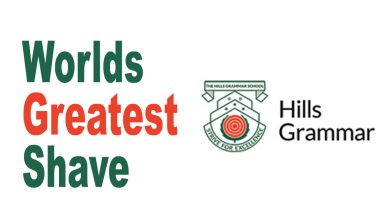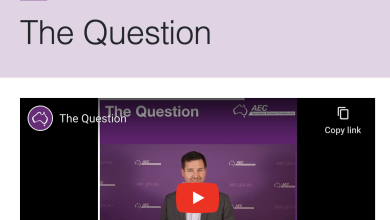If you bought your home before 2014, you’ll almost certainly have had some equity gain, courtesy of the spectacular growth the Sydney market has had in the last few years.
The question is – what are you doing with that equity? Are you putting it to use to secure your retirement? Or are you letting it be lazy and just sit there – the equivalent of keeping your money under the mattress.
Many people are aware that you can use equity as a basis for investing in property. However, they don’t understand exactly how to use that equity, while protecting their home. That’s exactly what this article is about.
Let’s look at an example to begin. Let’s assume that you purchased your property in 2010, just before the boom started for around $600,000.
Today, that property would have a market value of at least $840,000 if not more.
Assuming a market value of $840,000, how much equity do you have?
A lot of people will say the available equity is $840,000 minus the $600,000 purchase price, minus any debt. In other words, over $240,000.
That’s actually not accurate.
Firstly, because you’re keeping your home and want to use the available equity, you need to get the bank to do a bank valuation or lender’s valuation. This is where people receive their first (unpleasant) surprise.
If the market value, which is what a good agent thinks he or she can sell it for is $840,000, the bank valuation (for the purposes of using equity) will almost certainly come in below that. So let’s assume the bank valuation comes in at $800,000. That’s $40,000 less or about 5% below the market valuation.
Why do banks often provide a lender’s valuation that is less than the market valuation? In a nutshell, they want to protect themselves.
Now the bank will never lend you 100% of the lender’s valuation. They normally only go up to 80% or 90%.
Let’s work with 80%
Now let’s assume you still have a mortgage on your home of $450,000.
What’s your available equity?
Available Equity = 80% of the Lenders’ Valuation Minus Your Existing Mortgage.
So in this case:
Available Equity
= (80% * $800,000) – $450,000
= $640,000 – $450,000
= $190,000
That’s still a significant amount of funds.
Now, what do you do with that $190,000? How do you use it to get into an investment property?
Let’s assume you’re going to buy an investment property for around $600,000.
We want to protect your equity as much as possible. So I recommend using a different lender on your investment property than the lender on your home.
Now, over the last 16 years, whenever I have said that to people, they often say, “But how will a different lender lend me the money?” A lot of people think you’ve got to go back to the same lender you’ve got on your house for your investment property loan. That is far from the truth
Let’s say a different lender, say Lender B gives you an 80% loan, which works out to be $480,000. They are happy. However, they want to know where the remaining 20% ($120,000) plus costs (stamp duty etc) are coming from.
Well those funds come from the equity in your home. You will recall we worked out that you have $190,000 in available equity. The lender on your home, let’s say Lender A, is happy because they have security over your home and will lend the extra $190,000 or whatever amount you require. Lender B is happy because they have security over your investment property. However, the key benefit here is that Lender B has no direct access to your home, giving your home more protection.
Your home is your castle. Your equity is your greatest asset. You want to always make sure they are protected and by using different lenders strategically, you can give yourself that protection.
So this is how you use equity in your house to get into an investment property safely. Of course, I am assuming here that you qualify for the extra loans – which is something that can only be determined on a case by case basis.
If you have available equity in your home and you’re not doing anything with it, it’s like putting money under the mattress. It’s not working hard for you. I mean, it doesn’t matter what your home is worth. If it’s a million dollars, $2 million, you don’t care, because you can’t eat your house. You have to use the equity that you have in your house and get it to work for you safely, but also get it to work for you in a manner that creates wealth over the next few years.
Once you understand that you need to put your equity to work for you, there are 3 things to consider when buying an investment property:
1. The property needs cost you no more than a cup of coffee a day. If it’s any more than that, it will affect your lifestyle and there is no point in that.
2. You need to buy a property in good capital growth locations – so that you get a good long term return on the equity you’re investing
3. You need to buy in areas where the property will get rented quickly. Otherwise, you’ll end up paying the mortgage on your home (if you still have one) and for the mortgage on your investment property.
So if you’d like some assistance in using your equity to purchase investment properties that cost you no more than a cup of coffee a day (and may even put money into your pocket every month), then feel free to contact us on 1300 853 548 for a no-obligation free consultation.
To your success,
Niro Thambipillay Investment Rise Named as one of the “Nation’s Property Experts” in 2016 by news.com.au and founder of Investment Rise, Niro Thambipillay has been investing in property all around Australia since 2002. Over the last 6 years he has personally helped his inner circle clients purchase over $61.8 Million worth of investment property. His belief about property investing is that “Capital Growth Should Be The Ultimate Goal of Every Investor” but your investment property should never cost you more than a cup of coffee a day. For more information on he can make that happen for you, visit www. investmentrise.com.au










